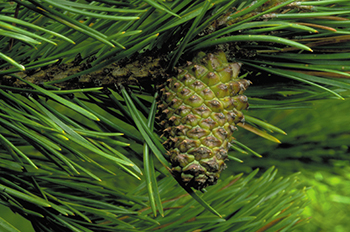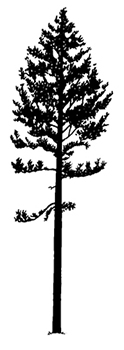Alberta's provincial symbols
Alberta is the most populous of the three Prairie Provinces. Bordered by British Columbia to the west and Saskatchewan to the east, it is one of only two provinces that are landlocked.
Origin of the name
Alberta was named for Queen Victoria's fourth daughter, Princess Louise Caroline Alberta. The Princess was the wife of the Marquess of Lorne, who was Governor General of Canada in 1882 when the District of Alberta was created as part of the Northwest Territories. In 1905, the name was retained when the District of Alberta was joined with parts of the districts of Athapaska, Assiniboia and Saskatchewan to create the present-day province of Alberta.
Population (2006): 3,375,800
Area: Land – 644,390 km2 Fresh water – 16,800 km2 Total – 661,190 km2 Capital: Edmonton Date of entry into Confederation: September 1, 1905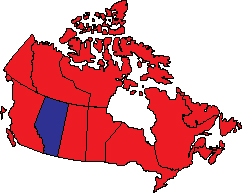
History
The oldest identified archaeological sites in Alberta date back approximately 11,000 years. When Europeans reached what is now Alberta in the mid-18th century, the area was home to many different First Nations. Historically, the Blackfoot or Siksika, the Peigan, the Blood or Kainai, the Tsuu T’ina or Sarsi, the Kutenai, the Cree, the Assiniboin or Nakota, the Gros Ventres or Atsina, the Beaver or Tsatinne, the Chipewyan and Slavey or Dene Tha’ – all had close associations with lands now located within Alberta.
In 1778, fur trader Peter Pond established the first trade post within the boundaries of modern Alberta. Soon other posts were constructed on the Athabasca, Peace and North Saskatchewan rivers by both the North West and Hudson’s Bay companies. Often, the posts were built virtually side-by-side; this was the case with Fort George and Buckingham House on the North Saskatchewan River, and Fort Chipewyan and Nottingham House on Lake Athabasca.
Competition for furs ended briefly after the North West and Hudson’s Bay companies merged in 1821. By the mid-19th century however, free traders operating in Alberta reintroduced competition into the fur trade.
In the mid-19th century, several scientific expeditions examined the agricultural potential of the Canadian West; most notably Captain John Palliser’s expedition of 1857–1860. Palliser believed that the Southern Prairies, sometimes referred to as Palliser’s Triangle, were too dry for farming. He and other observers, including the notable naturalist and geologist Henry Youle Hind, did think that the land was fertile and well suited to agricultural settlement further north. In 1869, the British and Canadian governments began negotiations with the Hudson’s Bay Company over the transfer of its trade monopoly and lands. In 1870, these lands, including most of present-day Alberta, were acquired by the Government of Canada.
Settlement was slow until the Canadian Pacific Railway reached Alberta in 1883. The railway made it easier for new settlers to get to Alberta and sell the crops they grew. In 1891, a railway was completed from Calgary to Strathcona, across the North Saskatchewan River from Edmonton. Other railway lines followed, including the transcontinental Grand Trunk Pacific and Canadian Northern railways, which reached Edmonton in 1911.
In 1905, Alberta and its neighbour Saskatchewan entered Confederation. For the first time, Canadian provinces were joined from sea to sea. Settlement boomed in Alberta. Land in the new province was readily available at low cost under the Homestead Act or could be purchased from railway and other land companies. The discovery of new strains of wheat and other grains suited to western Canadian growing conditions and new methods of farming also helped encourage rapid settlement.
In 1891, the population of Alberta was about 26,500 people. By 1901, this number had grown to about 73,000. In 10 years, the population increased over five times to 374,000 in 1911, before increasing substantially again to more than 584,000 in 1921. As a result, the population of Alberta came to be made up of many peoples of different backgrounds, languages and cultures.
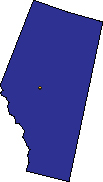
Coat of arms
Alberta's coat of arms was granted by King Edward VII in 1907. Queen Elizabeth II granted a crest, supporters and motto in 1980 to mark the 75th anniversary of the creation of the province.
The upper portion of the shield displays the Cross of St. George, while the lower part portrays the varied nature of the province’s landscape – mountains, foothills, prairie, and grain fields. Above the shield is the crest of a beaver bearing the Royal Crown on its back. Below the shield are wild roses, the province’s floral emblem. The supporters are a lion, a royal symbol, and a pronghorn antelope, an animal indigenous to the province.
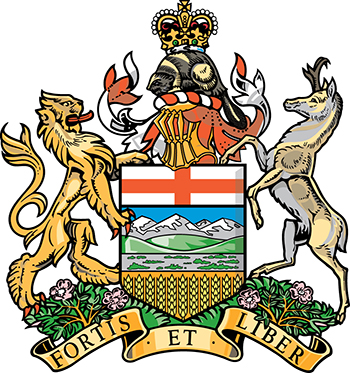
Motto
Fortis et liber (Strong and free)
Flag
The Alberta flag was first used in 1967 and officially adopted the following year. The flag features the Alberta shield of arms in the centre of a royal ultramarine blue background. The flag’s proportions are two by length and one by width.
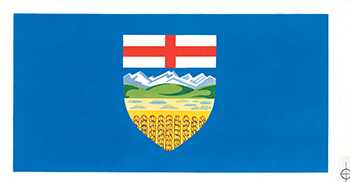
Floral emblem
The wild rose (Rosa acicularis), also known as the prickly rose, became Alberta’s floral emblem in 1930. The editor of an Edmonton newspaper suggested that a provincial floral emblem be selected, and the Women’s Institute took up the suggestion and passed it on to the Department of Education. The province’s schoolchildren made the final selection.
The most widely distributed native rose in Canada – ranging from Quebec to British Columbia – the wild rose is popular for both its colour and fragrance. Its scarlet berries are a valuable source of winter food for birds.
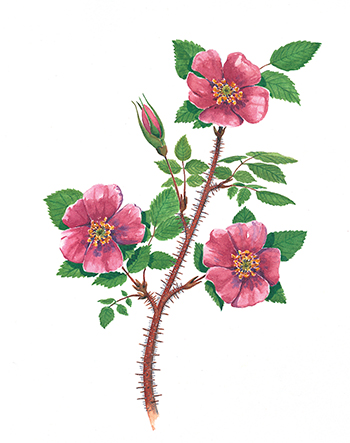
Other provincial symbols
Animal
A native Alberta mammal, the Rocky Mountain bighorn sheep was designated as the provincial animal in 1989. Prehistoric remains have been found in most of the river valleys across Alberta, showing that at one time some of the largest herds of Rocky Mountain bighorn sheep roamed the province. Today, the bighorn is primarily found in the Rocky Mountain region.
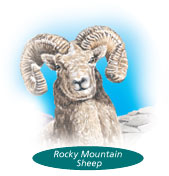
Bird
Alberta adopted the great horned owl (Bubo virginianus) as its official bird in 1977, following a province‑wide children’s vote. The great horned owl lives in Alberta year round. It was selected to symbolize the growing concern over threatened wildlife, not only in Alberta but around the world.
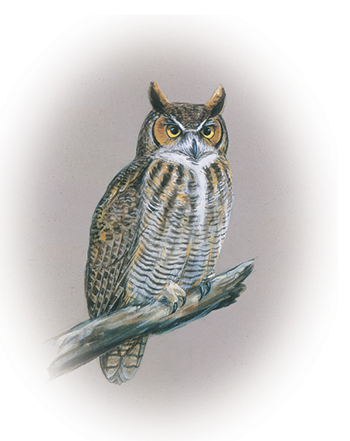
Colours
Blue and gold
Fish
Adopted as the official fish of Alberta in 1995, the bull trout (Salvelinus confluentus) is one of eight species of trout found in the province’s glacial waters. To ensure Alberta’s population of bull trout never becomes endangered, there is a catch and release policy governing all bull trout fishing in the province.
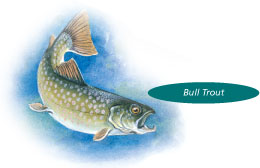
Grass
Alberta has the largest area of rough fescue (Festuca scabrella) grassland in the world and is the only place in North America that hosts the plains, foothills and northern kinds of rough fescue. Rough fescue provides excellent year-round forage for wildlife and livestock. It is a symbol of Alberta’s prairie heritage and the need for the conservation of our rich biodiversity of native grasslands. Rough fescue was designated the official grass of Alberta in 2003, due to the efforts of the Alberta Prairie Conservation Forum.
Stone
Named Alberta’s official stone in 1977, petrified wood is commonly found in gravel pits throughout the province. Petrified wood is the result of the deposit of microcrystalline quartz in the pores and cells of the fallen trees of the Cretaceous and Paleocene times, 60 to 90 million years ago.
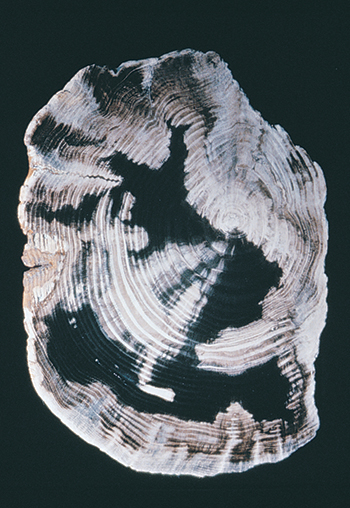
Tartans
Alberta’s tartan was designed by Alison Lamb and Ellen Neilsen from the Edmonton Rehabilitation Society, a voluntary agency providing work for handicapped students learning to operate handlooms. The tartan was given official recognition in 1961.
The predominant colours are green for the province’s forests and gold for its fields of wheat. Other attributes of the province are represented by blue for the skies and lakes, pink for the wild rose, and black for the mineral resources of coal and petroleum.
In 2000, Alberta adopted a dress tartan. Complementary to the Alberta tartan, it includes the same colours but adds large sections of white – a symbol of Alberta’s bright, snowy days. The Alberta dress tartan is worn for dancing, special occasions and formal attire.
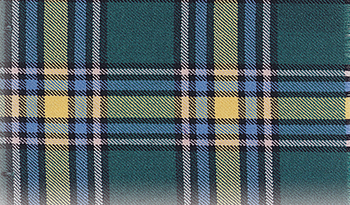
Tree
Adopted as Alberta’s official tree in 1984, the lodgepole pine (Pinus contorta) played a significant role in Alberta’s early history. It was used to create the railway ties for the tracks that linked the province to eastern Canada. Today, the lodgepole pine is used for poles, pulp and many other products of Alberta’s forest industry.
